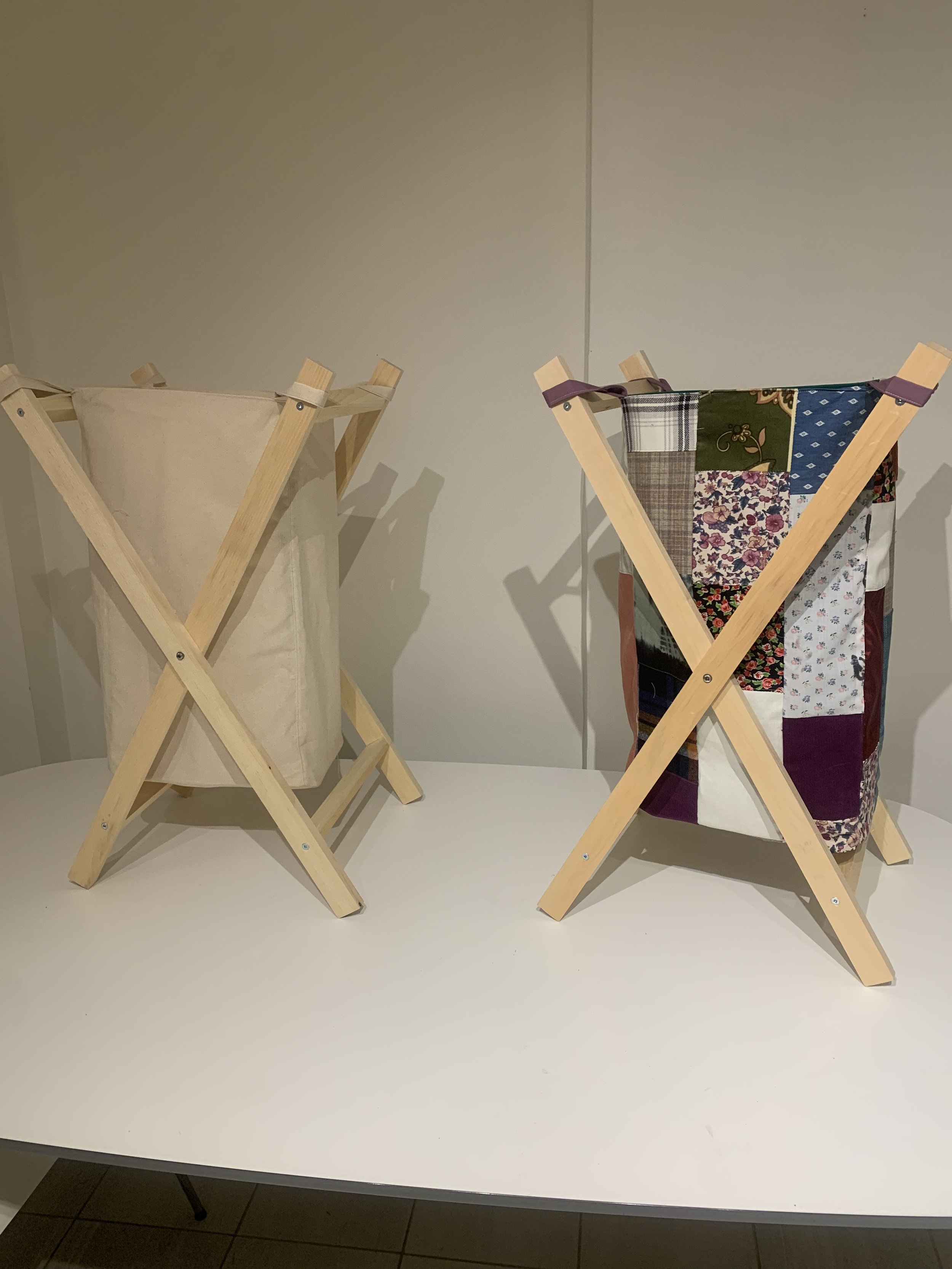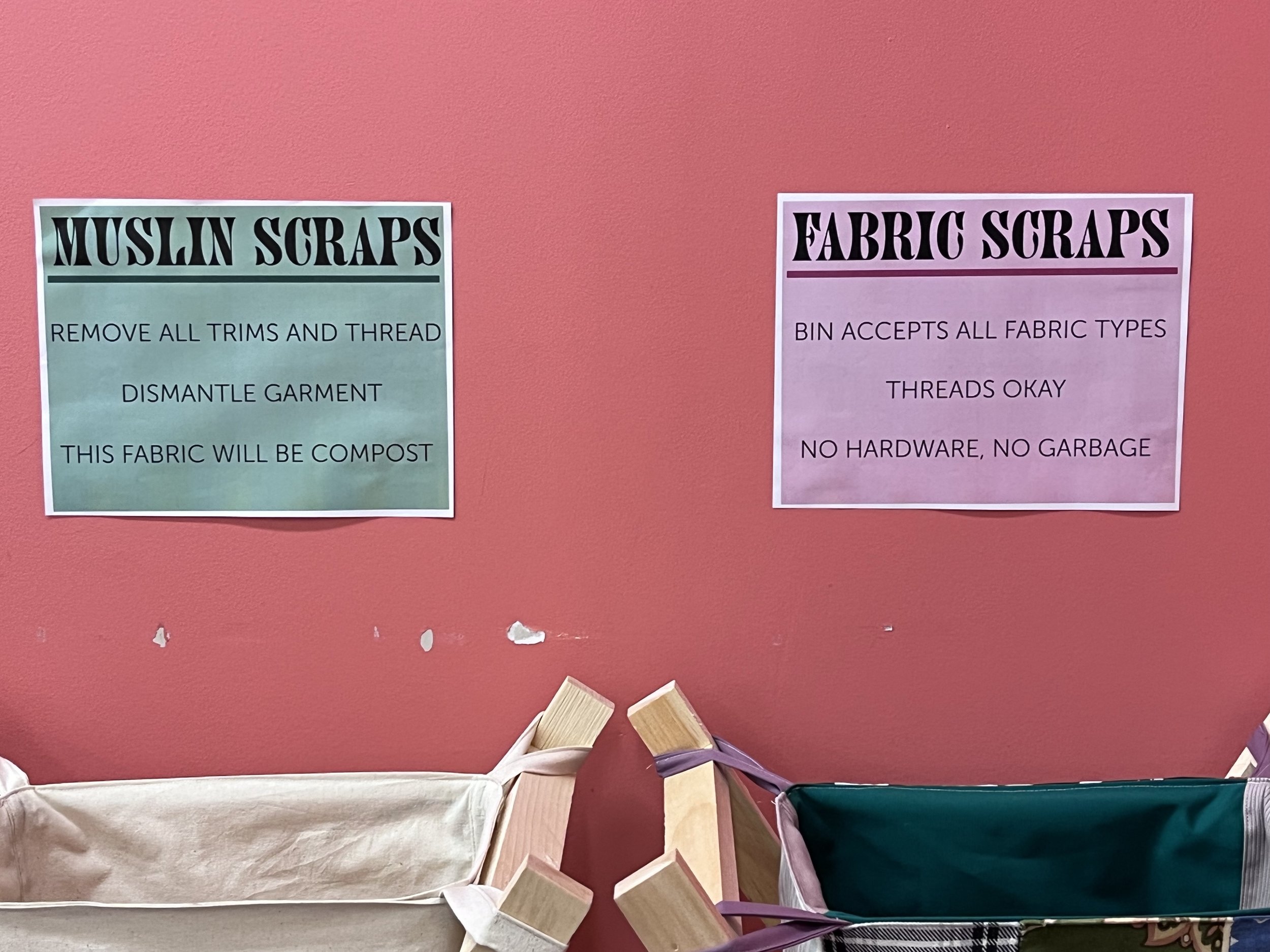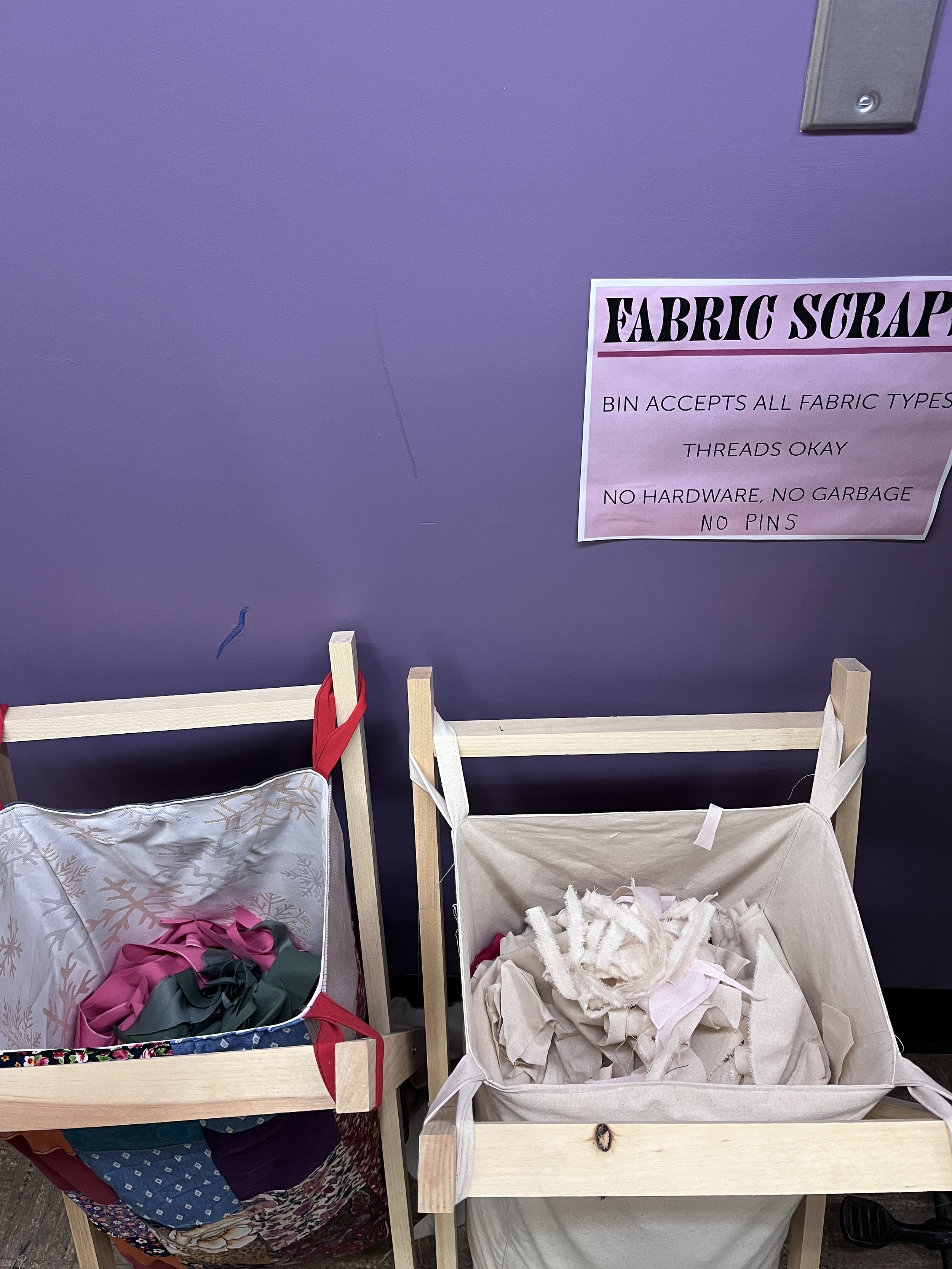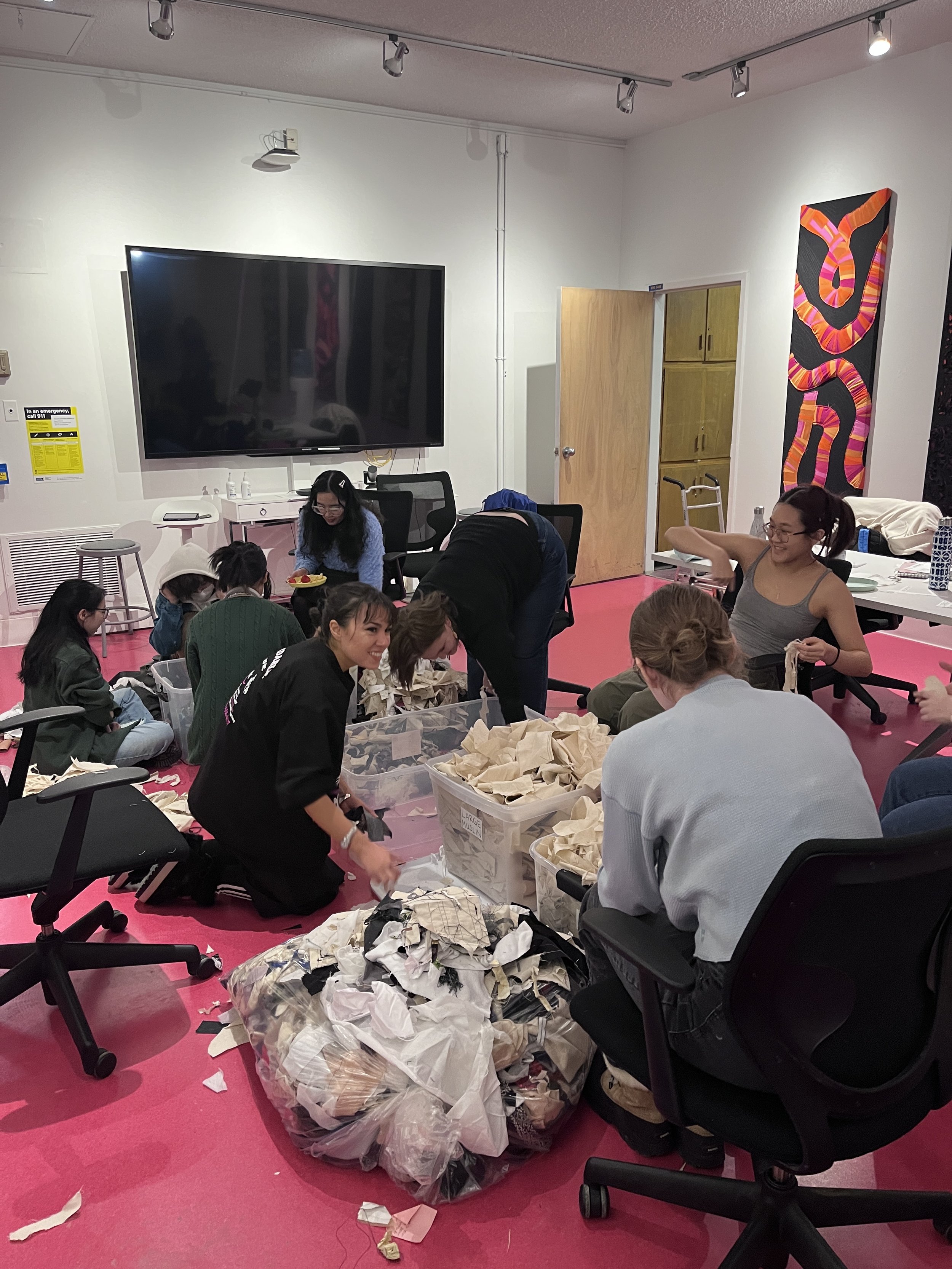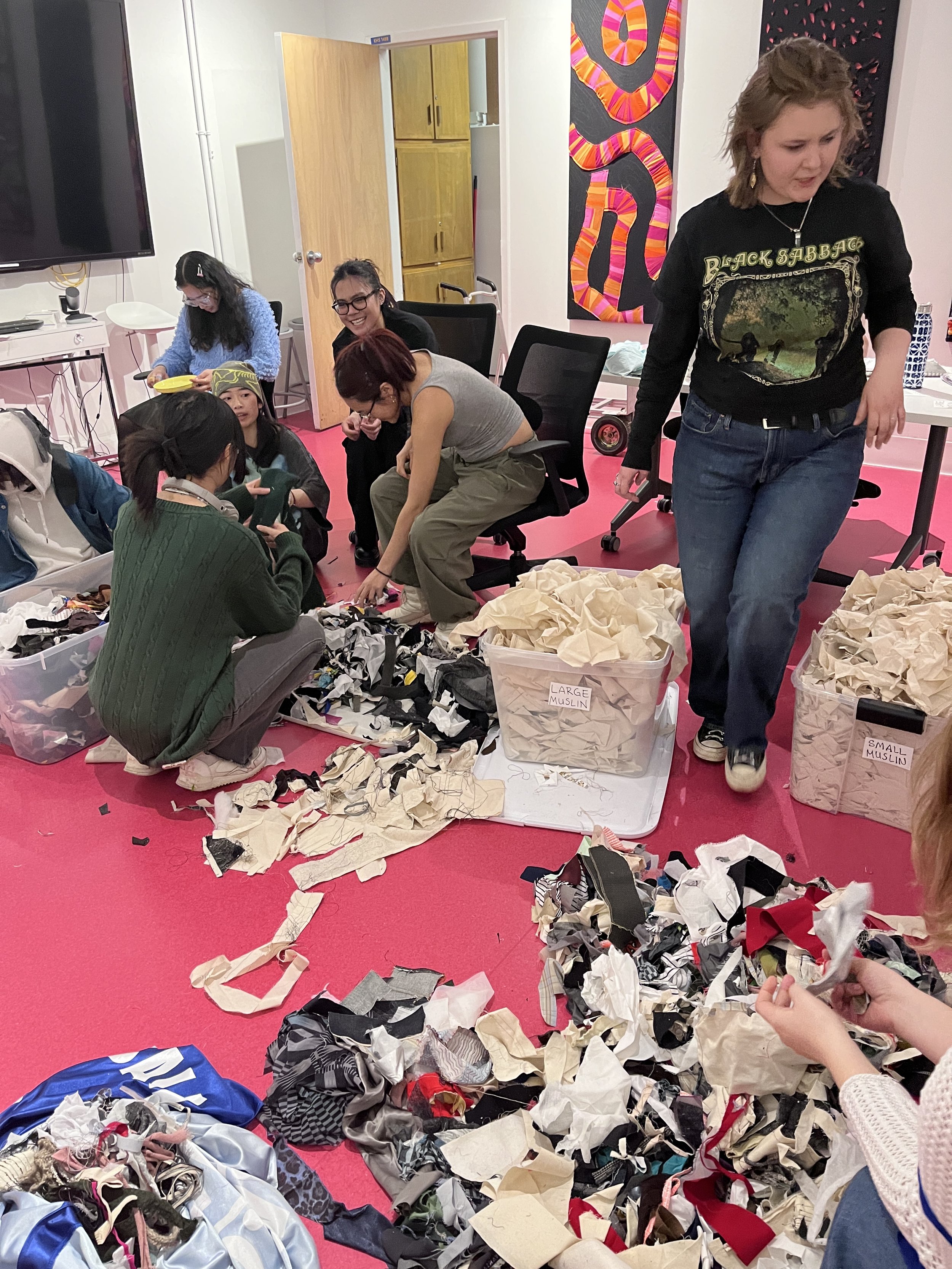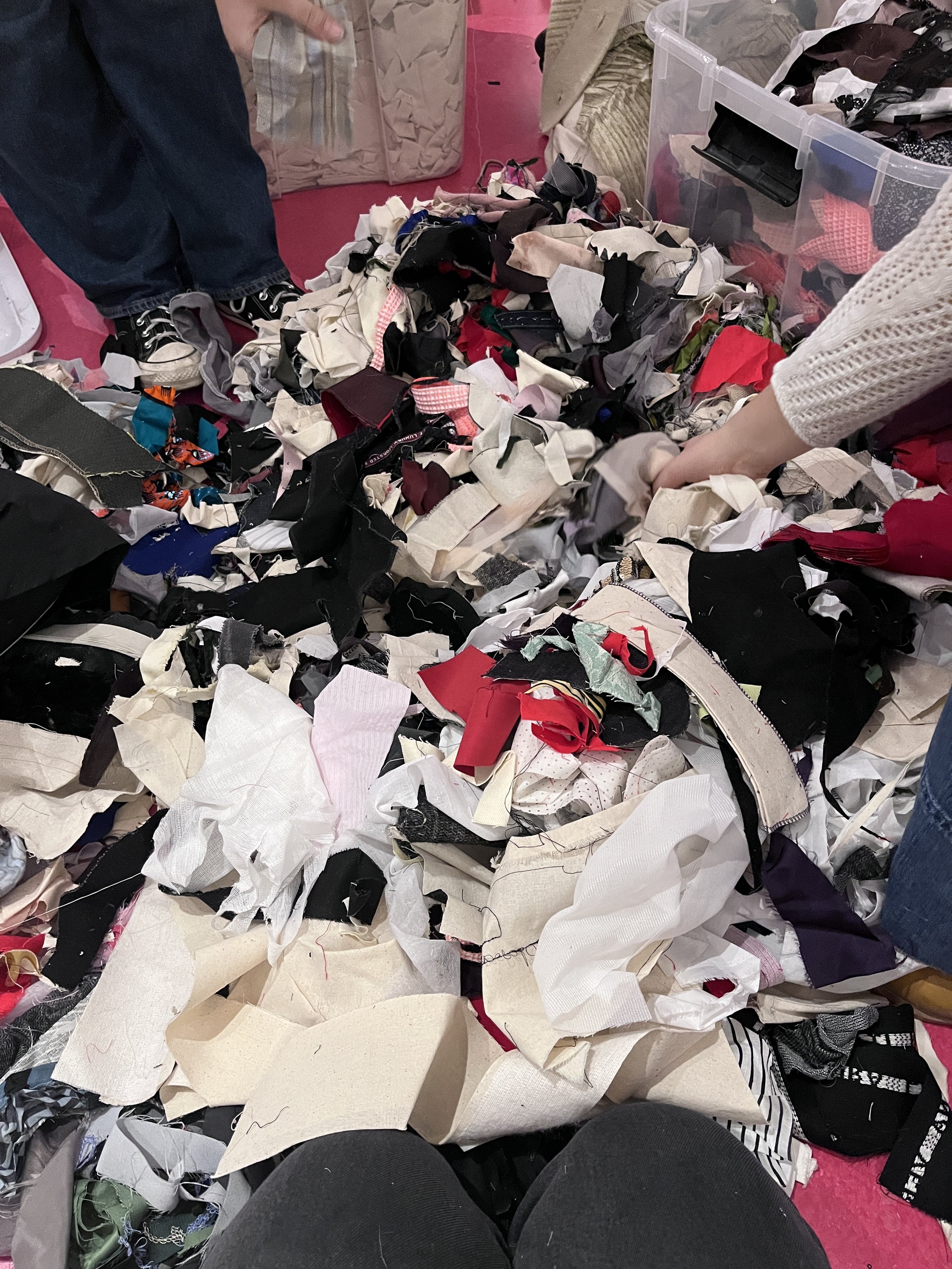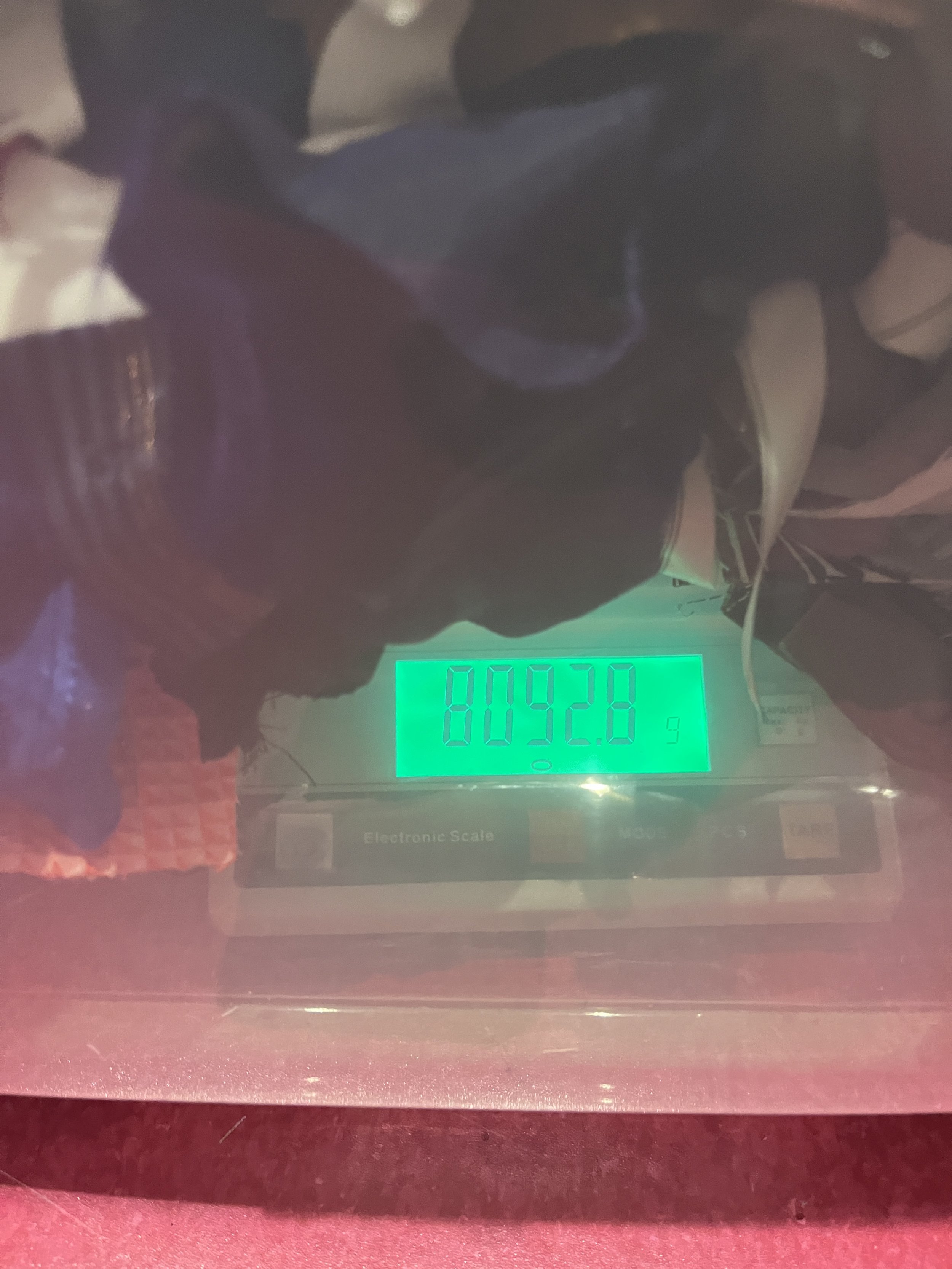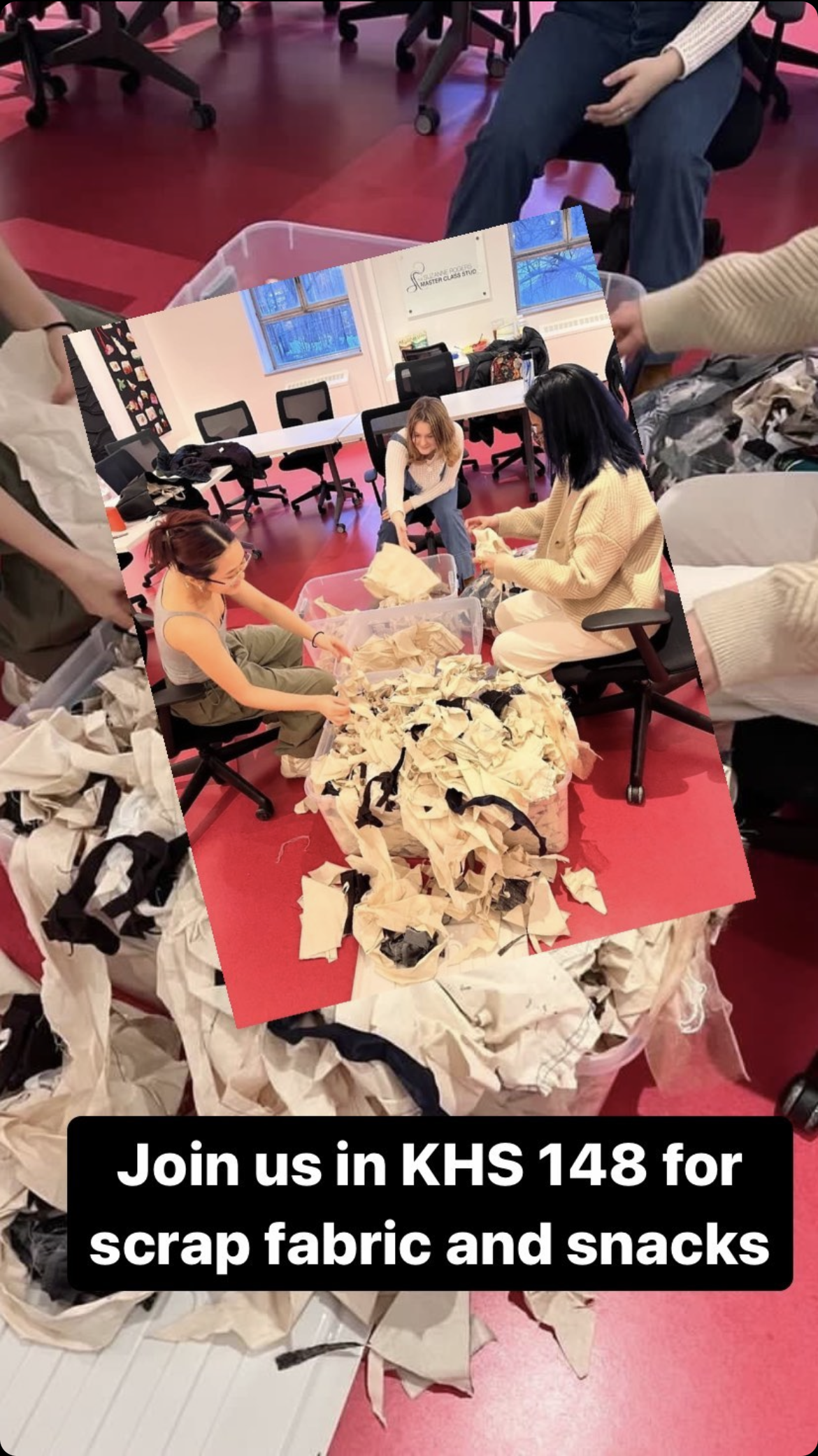undergraduate textile recycling practices
This project was about exploring methods of teaching sustainable fashion relevant to the modern demand for fashion student’s skills and knowledge. The impetus for the project came from discussions with students over what was seen as an absurd practice — how can any teaching about sustainable design be taken seriously while simultaneously throwing textiles (e.g., scraps, toiles) in studio garbage bins….
Multiple failed attempts to develop a departmental textile recycling system with students over a 4-year period led us to apply for a research grant. We were awarded a SSHRC** Explore grant which provided the much needed resources to research, design, develop and implement a textile recycling program.
Ultimately, “How can we inspire and teach future designers to reduce textile waste and design for circularity if we are not problem-solving that very issue within our fashion program?”
The team explored the future of fashion design education by examining the textile waste reduction (TWR) and recycling (TR) practices at thirty seven undergraduate fashion programs globally. Results identified best practices leading to the creation of a student group to participate in the implementation and management of a TR program at TMU’s Fashion School. Outcomes validate how integrating TWR & TR initiatives provide an opportunity for students to be confronted with the realities of the wastefulness of current fashion practices. Integrating sustainable practices through TW & TR initiatives models responsible behaviours by emphasizing TWR to foster creativity leadership in students; an important element for instigating systems change. Students become mobilized to develop local, low-fi and creative solutions to continuously recirculate TW. End-of-life circular solutions highlight the importance of the sorting phase in determining criteria for the allocation of TW into the appropriate stream for highest value recapture - an excellent example of creativity leadership development.
Identified best practices include criteria around bin design, communication of bin use & the program at large, day-to-day management in the form of processes and procedures and strategies to formalize practices at an institutional level. A major challenge to the survival of these initiatives is a lack of formalizing the associated duties at an institutional level (e.g., duties written into job descriptions). Involving students through a formal structure such as an official University student organization was shown to be one of the best alternatives for long-term viability of a TR program in the absence of formalized institutional practices. These types of activities do require departmental involvement and participation as a formal institutional practice rather than tasks that are individual and/or add-ons to existing structures, if seeking pedagogical and organizational change. These findings have broader application for any fashion organization seeking to develop sustainability as a core institutional practice. The study concludes by stating fashion design education must evolve so undergraduate students as future apparel professionals, will be mobilized to have shared values regarding responsible material practices contributing to larger industry reform.
** The Social Sciences and Humanities Research Council (SSHRC) of Canada is a Canadian federal research-funding agency that promotes and supports post-secondary research and training in the humanities and social sciences.


